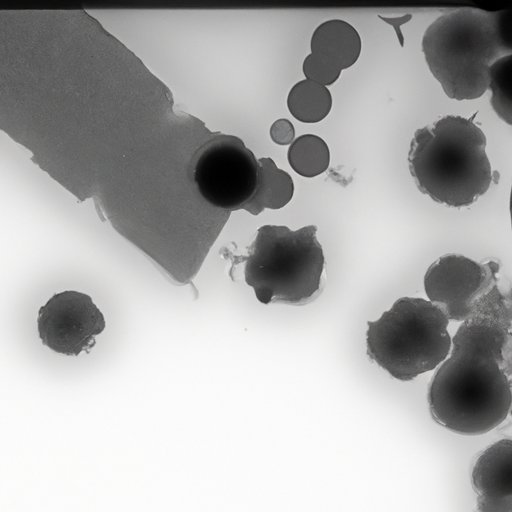I. Introduction
Have you ever wondered how scientists determine the lifespan of radioactive material or how pharmacologists determine the proper dosage of drugs? They use a concept called half-life, which is the time taken for half of a particular substance to decay, disintegrate or be metabolized. This article provides a step-by-step guide to calculate half-life, explains its importance in various fields, and explores its significance in nuclear physics, pharmacology, medical imaging, carbon dating, and environmental science.
II. A Step-by-Step Guide to Calculating Half-life
Calculating half-life is relatively simple once you know the fundamental equation. Half-life can be determined using the following formula:
Half-life (t1/2) = ln(2)/decay constant (λ)
The decay constant is a proportionality constant that describes how quickly the substance decays. In other words, it tells you how much will decay in one unit of time. It is expressed as λ = N/t, where N is the number of radioactive nuclei and t is the time.
Let’s look at an example. Suppose the initial quantity of a radioactive substance is 200 grams, and its decay constant is 0.1 per day. Using the above formula, we can calculate the half-life as:
t1/2 = ln(2)/0.1
t1/2 = 6.93 days
This means that every 6.93 days, the amount of the substance remaining will reduce to half its initial quantity.
III. Understanding Half-life in Radioactive Decay
Radioactive decay occurs when the nucleus of an unstable atom disintegrates, releasing radiation in the form of alpha, beta, or gamma particles. Half-life plays a crucial role in determining the rate at which radioactive substances decay.
Half-life is a characteristic property of each radioactive element and is not affected by temperature, pressure, or any other external factors. For example, the half-life of Carbon-14 is 5,700 years. This means that if there was 100% Carbon-14 in a sample at the time of a living organism’s death, then after 5,700 years, only 50% of it will remain. After another 5,700 years, only 25% will be left, and so on.
IV. Using Half-life in Pharmacology
The principles of half-life are essential in pharmacology, where drugs are administered to patients in specific doses. By understanding a drug’s half-life, clinicians can determine the appropriate dosage and frequency of administration to achieve the desired therapeutic effect.
Pharmacologists also use half-life to determine how long a drug stays in a patient’s body, which is crucial for monitoring potential side effects and ensuring that repeated drug administration does not lead to overdose.
V. The Relevance of Half-life in Environmental Science
Half-life is an essential concept in understanding the environmental impact of radioactive material. For example, a radioactive material’s half-life determines how long it will remain toxic and dangerous in an environment after being released. Environmental scientists use half-life to determine the appropriate protocols for safe disposal of radioactive waste and to assess long-term risks to people and ecosystems that may be exposed to radiation.
VI. Calculating Half-life in Nuclear Physics
The concept of half-life is central to nuclear physics, particularly in understanding the behavior of radioactive isotopes. Half-life calculations provide information about the stability and decay of radioactive particles, which is vital for applications such as nuclear power generation, nuclear weapons, and medical therapies that use radioactive isotopes.
Nuclear physicists study and analyze the half-life of radioactive isotopes through research methods such as decay spectroscopy and radioactive decay schemes.
VII. The Significance of Half-life in Carbon Dating
Carbon dating is widely used in the field of archeology to determine the age of artifacts containing organic material. This technique is based on the principle of radioactive decay of Carbon-14 (C-14) isotopes.
C-14 has a half-life of 5,700 years, and its decay rate follows an exponential decay curve. By analyzing the proportion of C-14 isotopes in a sample and comparing it to the stable isotope C-12, it is possible to determine the approximate age of the material.
VIII. Understanding the Importance of Half-life in Medical Imaging
Medical imaging techniques such as CT scans, PET scans, and MRI scans use radioactive isotopes to create images of internal organs and structures. Understanding the half-life of these isotopes is essential for determining the most appropriate time for imaging.
Medical professionals must administer these isotopes at precisely the right time to ensure that the isotopes reach the body’s desired site and decay at the appropriate rate, allowing the imaging equipment to capture accurate and reliable images.
IX. Conclusion
Half-life is an essential concept in various scientific fields, from nuclear physics to environmental science, pharmacology, archeology, and medical imaging. Understanding how to calculate and apply half-life is crucial for determining appropriate dosages, assessing environmental risks, and ensuring medical imaging scans are effective.
In conclusion, the properties of half-life offer vital information about the behavior of different isotopes, making it a valuable tool for scientists and researchers in many different fields.
